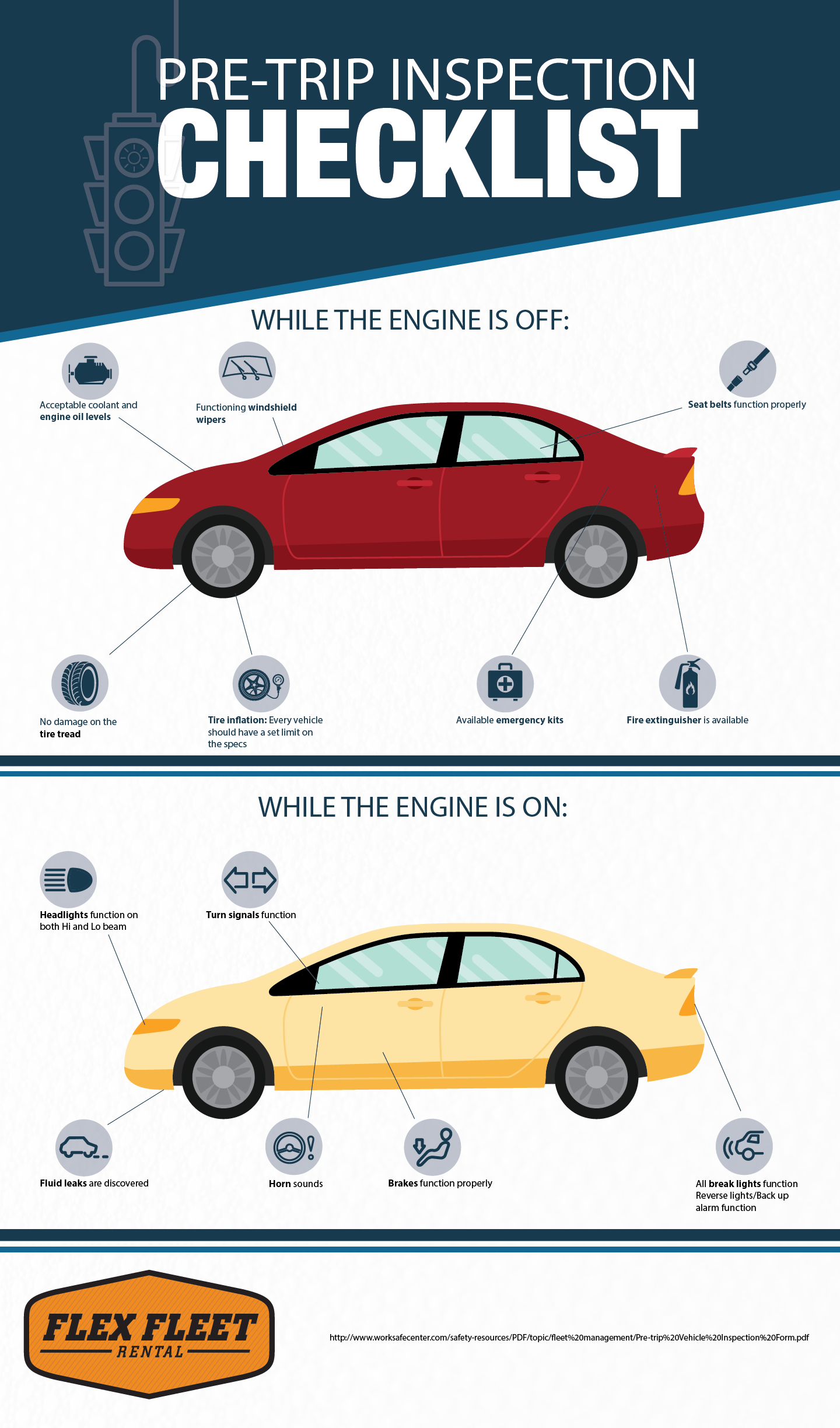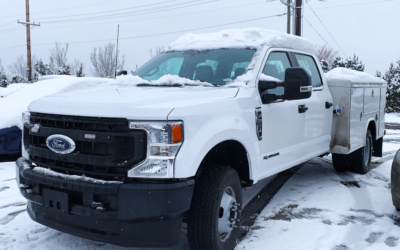Benefits of Following a Pre-Trip Inspection checklist
Setting out on a long car ride may be a routine part of your day, but that doesn’t mean you can afford to be lax about safety measures or the health of your truck. Conducting a pre-trip inspection is a core responsibility for truck drivers, and using a pre-trip checklist is an added layer of both protection and peace of mind. Truckers that use a checklist can rely on benefits such as:
- Reduced potential for delays. Unexpected breakdowns can throw a wrench in your routine, especially by delaying your trip. This costs money, hampers your time, and frustrated the supply chain, customers, and vendors. Having a checklist is a great way to do everything you can beforehand to prevent delays and have a smooth journey.
- Early identification of problems. Often, the longer a problem with your vehicle goes undetected, the more damage it can do. By going down your checklist, you can discover and mitigate vehicle issues before they become serious, which can otherwise put you and other drivers at risk and cost more money to repair.
- Longer life span of your vehicle. By performing more routine checks and using a reliable and thorough checklist, your trucks will last longer and always function optimally. Preventative maintenance is key to making your truck go the extra mile and getting the biggest bang for your buck when you purchase a truck for your fleet.
- Identify activities that erode profitability. When it comes to the health of your truck, some low-priority concerns can grow into expensive impacts later on, such as driving with tires improperly inflated, which results in increased fuel consumption and shortened engine life. A pre-trip inspection checklist eliminates those concerns by ensuring that everything is in tip-top shape and bringing any minor issues to your attention.
- Easily meeting legal requirements. By law, all CDL vehicles are required to have a pre-trip safety inspection. Having a CDL pre-trip inspection checklist handy guarantees that you are abiding by all laws and regulations and also keeping yourself and others safe.

What to look for when the engine is off
When inspecting your equipment and vehicle, there are certain checks you want to make while the engine is turned off.
- Engine oil levels. This involves checking the oil dipstick to determine if the engine has an adequate amount of oil. The oil level should be within the designated range to ensure proper lubrication and to prevent engine damage.
- Windshield wiper function & fluid levels. The last thing you want while driving is to have your vision suddenly impaired because your wipers aren’t working properly. Inspecting the windshield wipers involves checking their condition and ensuring that they are free from damage or deterioration. Drivers should test the wiper function so that they move smoothly across the windshield. Fluid levels should also include looking at the windshield washer reservoir to make sure it is filled with the appropriate washer fluid, which is essential for maintaining clear visibility.
- Seat belts function properly. Seatbelts are a primary component of safety when driving, so drivers need to double-check them to make sure they are functioning normally. They should inspect the seat belts for any visible signs of damage, such as fraying, cuts, or worn-out components. Additionally, they should test the buckles and latches to ensure they fasten securely.
- Fire extinguisher is available. A fire extinguisher is an important safety device to have in case of emergencies. During the pre-trip inspection, drivers should ensure that a fire extinguisher is present in the vehicle, easily accessible, and in good working condition. They can visually inspect the pressure gauge to ensure it is within the acceptable range and that the safety pin is intact.
- Emergency kits are present and complete. In the event of an emergency, drivers need to know that they have all of the resources and tools available to them in a kit, so checking for missing items is key to safety. Common items in an emergency kit include first aid supplies, reflective triangles, a flashlight, and basic tools to help with vehicle troubles.
- Tire pressure/ inflation. Even with the engine off, drivers can manually check the tire pressure using a tire pressure gauge. They should consult the vehicle’s manual or the sticker located on the driver’s door jamb for the recommended tire pressure. All tires, including the spare tire, should be inflated to the appropriate pressure level to promote safe driving, optimal fuel efficiency, and prolong tire life.
- No damage to the tire head. While inspecting the tires, drivers should visually examine the tire treads for any signs of damage, such as cuts, bulges, or uneven wear. Adequate tire tread depth is essential for proper traction and safe driving—if the tread gets too low, you risk blowing a tire on the freeway since the tire is more susceptible to getting punctured. If any tire shows signs of damage or inadequate tread depth, it should be addressed before embarking on a trip.
What to look for when the engine is on
Once the engine is running, there are a couple of essential checks that a driver should make before hitting the road. Various components require power from the engine or electrical system to be properly checked such as the following items:
- Headlights work. Trucks need all the visibility they can get, and headlights are especially important during late-night and early-morning deliveries. Turn on both the low-beam and high-beam headlights to verify that they are functioning correctly. Inspect the headlights to ensure they are clear, undamaged, and aimed properly for optimal visibility during nighttime driving.
- Turn signals function properly. Safe drivers also need to use and trust their turn signals, so activate both the left and right turn signals, as well as the hazard lights, to confirm that they are working correctly. Check that all exterior signal lights, including the front and rear turn signals, as well as the side marker lights, are illuminating and blinking at the appropriate speed.
- Brake lights. The back break lights are also essential for communication on the road. Drivers should depress the brake pedal and observe the rear of the vehicle to check if the brake lights illuminate. Confirm that all brake lights, including the high-mount brake light (if applicable), are functioning properly. Faulty brake lights can lead to accidents as they signal your intention to slow down or stop other drivers.
- Brakes. With the engine running, test the effectiveness of the brakes. Carefully apply the brakes while driving at a low speed in a safe location, such as a parking lot. Listen for any unusual noises, vibrations, or signs of brake grabbing. Additionally, pay attention to the brake pedal responsiveness and ensure it doesn’t sink to the floor, which could indicate a brake fluid or hydraulic system issue.
- Horn sounds. Test the vehicle’s horn to ensure it emits a clear and audible sound. A properly functioning horn is essential for alerting other drivers of your presence and for warning in emergency situations.
- No fluid leaks. While the engine is running, inspect the ground beneath the vehicle for any signs of fluid leaks. Common fluids to check for include engine oil, transmission fluid, coolant, power steering fluid, and brake fluid. Leaks can indicate a problem with the vehicle’s systems and should be addressed promptly to prevent further damage or mechanical failure.
Trucking with Summit Fleet
If you want drivers to be safe, trucks to be preserved, customers and vendors to be happy, and your overall operations to wisely allocate resources and save money, having a pre-trip inspection checklist is the best way to go. Instead of relying on memory or ignoring issues that can snowball into much bigger problems, a checklist ensures that every step, legal and otherwise, is accounted for and put into practice.
Summit Fleet meets all of your trucking needs and can make both inspections and deliveries a breeze. Rent from our extensive selection of fleet vehicles to support your business for a competitive price.





